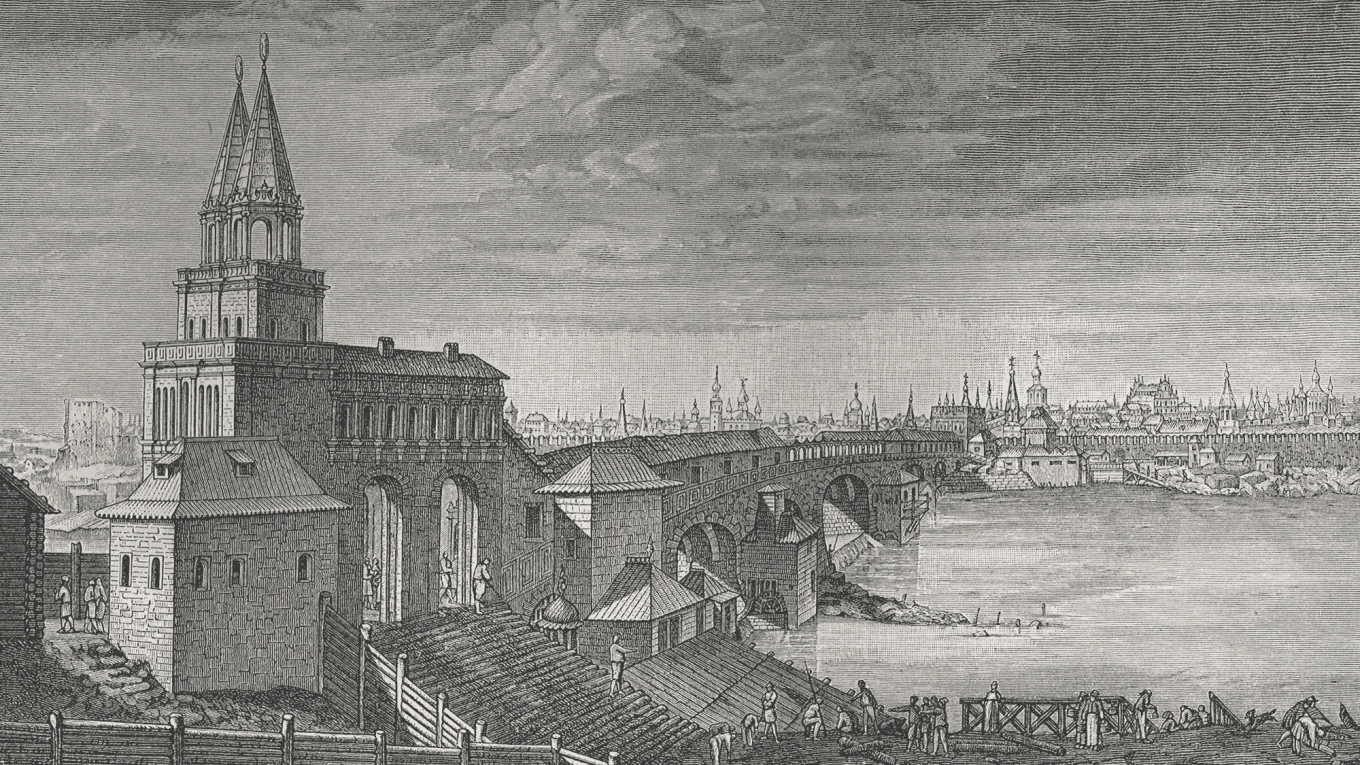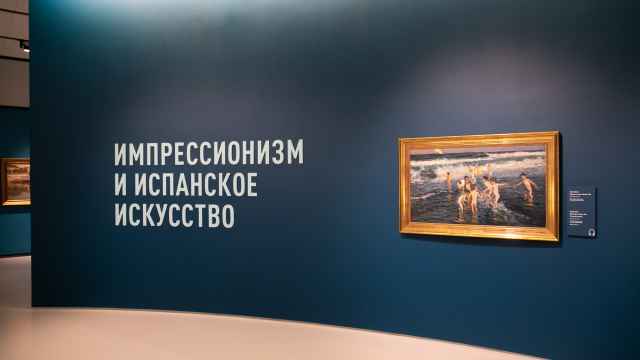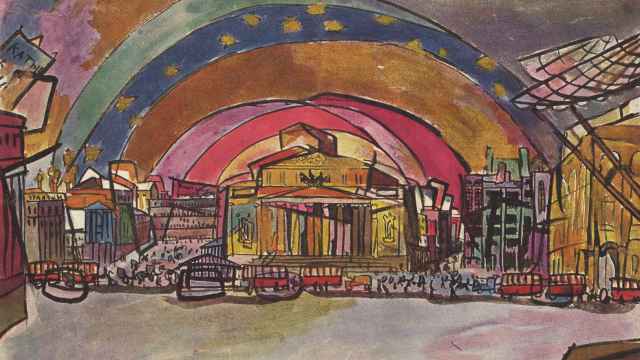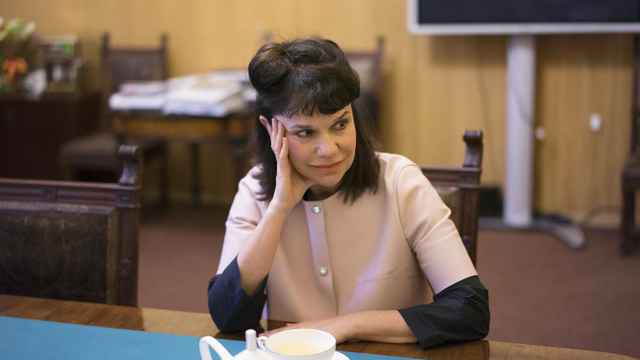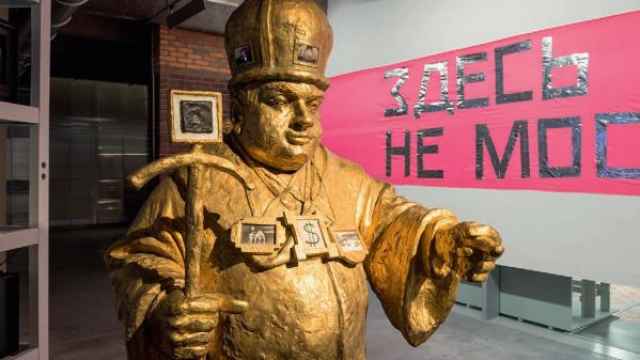We are used to thinking of Moscow as a city of stone and concrete, but most of its 870-year history, it was a city of wood. It is easy to imagine the huge hazard represented by fire in the city in medieval times – how often must parts of old Moscow been consumed by flames after a minor accident?
As a new exhibition at the Museum of Moscow confirms, this was indeed the case. “Fire. Invasion of the Tatars. Fire. Time of Troubles. Fire. Fire,” reads a timeline of Moscow history printed around the museum’s spiral staircase.
As the “Moscow through Foreigners’ Eyes” exhibition shows, the frequent catastrophes that Moscow suffered over the centuries forced the city to reconstruct itself every 30 years or so. The exhibition offers an 18th- and 19th-century insight into these changes through travelogues and pictorial representations made by foreign visitors.
“What did they see when they just arrived in Moscow?” asks museum director Alina Saprykina. “What surprised them? How did they write or draw it, and when they saw more of its life, what did they make of Moscow?”
The exhibit focuses on issues of city planning and administration through maps, lithographs and travel diaries that reveal a pragmatism not usually associated with Moscow or Russia in general. Over the centuries, it was largely self-preservation from fires and invaders that gave the historic center of the city its current shape.
First impressions
For example, in 1721, German diplomat Friedrich Christian Weber noted how fire prevention concerns forced the nobility to hide their beautiful houses behind high stone walls. The elegant homes “would be enough to make the city beautiful if they were situated regularly and in order; but they are surrounded by many wooden homes, and besides that, the facades don’t look out onto the street, but they are hidden in big courtyards behind great walls guarding against thieves and fire,” wrote Weber.
In many ways, little has changed. To this day, Moscow’s heavy architecture tends toward sheer, wall-like façades directly facing the street, sheltering quiet gardens and playgrounds inside the courtyards.
The exhibit’s maps also depict the growth of Moscow’s population as the city expanded outwards from the Kremlin (originally a medieval fortress). Successive governments built defensive walls of wood, earth, and finally stone walls to protect citizens.
Although they no longer exist, these walls continue to shape city topography: When they were no longer necessary for defense, they were pulled down and replaced with roads called the “Boulevard Ring” and the “Garden Ring” (Sadovoye Koltso). The current network of “Val” streets, (Presnensky Val, Zemlyannoi Val) which also ring the city, were once earthen works 6 meters high that forced traders with carts through official customs points (zastavy), where they would have to pay tolls.
“This exhibit allows us to compare what is still the same,” explains Saprykina, “and what has changed. Moscow as a city changes very rapidly.”
The 18th-century maps show that even Moscow’s underground metro follows the same pattern of development along concentric circles—many of its circle-line stations such as Kievskaya, Belorusskaya, and Paveletskaya were once entry points to the city. They remain the major transportation hubs, even now railways have replaced the dirt roads, and Aeroexpress trains speed travelers into the center from Vnukovo, Sheremetyevo, and Domodedovo airports.
Some of the foreign travel writers tempered aesthetic praise with social criticism. In 1790, Moscow’s “great contrasts” disturbed French Duke Alphonse de Piles. As revolution raged in his own country, de Piles documented how “on one and the same street 40-50 wooden huts represent the most terrible poverty, but a huge palace stands among them. Made of brick and architecturally elegant, it speaks of great wealth.”
Even today, rich and poor sit cheek by jowl in Moscow’s center, with the post-Soviet elite living in new luxury condominiums while the last hold-outs of Soviet egalitarian housing policies refuse to move out of their khrushchovki.
Some 35 years after de Piles, writer James Holman highlighted the joys and tribulations of traveling from St. Petersburg to Moscow for the cheap fare of what he describes as “10 sterling coins.” But Holman also complained of the necessity of acquiring papers from every local governor between the cities. In the 21st century, local transportation remains affordable, while visa and registration regulations continue to plague tourists and locals alike.
Daily life in the city
The 120-year-old Museum of Moscow documents the city’s metamorphosis with its collection of maps, paintings, texts, and artifacts related to daily life in Moscow since the 16th century. “Moscow through Foreigners’ Eyes” contains some magnificent examples.
In one lithograph, Novodevichy Monastery appears mysteriously alone on an empty field in the moonlight. Another depicts an 18th-century Easter fair with “swings,” enormous wooden precursors of the Ferris Wheel that people of the time would ride for amusement.
The exhibit includes a small assortment of clothing, toys, and tools. There are eight sets of men’s and women’s clothing: evening wear for aristocrats, Sunday best for well-to-do peasants, bright red sarafans worn by local ladies of the merchant class, and traveling clothes, ostensibly belonging to traveling foreign guests.
In one descriptive anecdote from 1867, “Alice in Wonderland” author Lewis Carroll recalled being such a guest at a “real Russian lunch,” where he ate pies (pirozhki), meat patties (kotlety), and “surprisingly tasty ice cream – lemon and black currant.”
Ceramic figurines from the collection, depicting cheerful peasants going about their daily tasks, stand alongside a three-horse sled (troika) spiriting Napoleon Bonaparte over the winter snow and out of Russia.
The most striking part of the exhibit, however, is a series of four lithographs from 1707, which, when lined up side by side, create a panoramic view of the Kremlin’s southern flank. The artist depicts the perspective from Sparrow Hills (Vorobyovy Gory) just across the river, a place where Muscovites and tourists still gather today to take panoramic photos and selfies.
The lithograph set illustrates the “Stone Bridge” that led directly into the southern side of the Kremlin. It obviously impressed the artist in terms of civil engineering— the waters of the Moscow River rush through the archways of the bridge—and in terms of trade. Not only do small buildings line the sides of the bridge, but the ramparts extending down toward the water also support small building structures for unloading wares from boats directly to merchants.
Not only does “Moscow through Foreigners’ Eyes” shows the capital as a forward-looking city, with the infrastructure to support a growing empire – it also shows the fascination the everyday exerted on those unfamiliar with Russian culture.
Until August 25
A Message from The Moscow Times:
Dear readers,
We are facing unprecedented challenges. Russia's Prosecutor General's Office has designated The Moscow Times as an "undesirable" organization, criminalizing our work and putting our staff at risk of prosecution. This follows our earlier unjust labeling as a "foreign agent."
These actions are direct attempts to silence independent journalism in Russia. The authorities claim our work "discredits the decisions of the Russian leadership." We see things differently: we strive to provide accurate, unbiased reporting on Russia.
We, the journalists of The Moscow Times, refuse to be silenced. But to continue our work, we need your help.
Your support, no matter how small, makes a world of difference. If you can, please support us monthly starting from just $2. It's quick to set up, and every contribution makes a significant impact.
By supporting The Moscow Times, you're defending open, independent journalism in the face of repression. Thank you for standing with us.
Remind me later.


